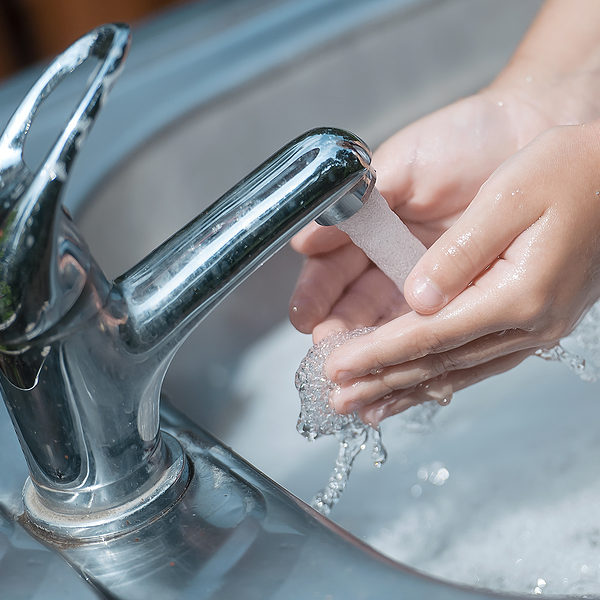
Activated carbon (activated or active charcoal) – A layer of porous carbon fibers used for the adsorption of chemicals.
Acidity – The amount of acid present in water.
Adsorption – The trapping of chemicals, gases and other dissolved substances in a water solution.
Aeration – The mixture of air and water to release any dissolved gases in the water supply.
Alkalinity – The ability for water to neutralize acids in a buffer solution without affecting the pH.
Bacteria – Biological micro-organisms including microbes, parasites and germs often found in groundwater.
Brine – A sodium chloride and/or potassium chloride solution used in the ion exchange process to soften hard water.
Brine Tank – A collection tank where the ion exchange process occurs to separate calcium, magnesium and other minerals from the water.
Chlorination – A chemical process used by most municipal water systems that adds chlorine as a means of disinfecting the water to kill any live bacteria that may be present.
Deionization – The removal of minerals and salts in the water through a chemical exchange of equivalent positively and negatively charged ions.
Filtration – The process of passing water through a porous material (filter) in a tank or cartridge to remove iron, sand, debris and other sediment that may be present in the water.
Flow rate – The rate at which water flows from the water supply into the filtration tank usually measured in gallons or cubic foot per minute.
Groundwater – Water that is extracted from underground soil, bedrock or limestone.
Hard water – Water that contains a high mineral content, usually limestone, calcium and magnesium.
Hydrogen sulfide (H2S) – Is a naturally occurring corrosive gas often present in groundwater. It is usually noticeable by its noxious “rotten egg” odor. While particularly unpleasant, low levels are safe to drink.
Ion Exchange – The chemical process of exchanging calcium and magnesium ions with sodium and potassium ions to reduce water hardness.
 pH (potential of hydrogen) – The measure of acidity and alkalinity in water on a logarithmic scale ranging from 1 to 14. The lower the number, the more acidic the water.
pH (potential of hydrogen) – The measure of acidity and alkalinity in water on a logarithmic scale ranging from 1 to 14. The lower the number, the more acidic the water.
Reverse Osmosis – A water purification method for removing chemicals and other impurities from the water by forcing water through a semipermeable membrane under pressure.
Water conditioning – The filtration and treatment of water that remove ions, contaminants and other impurities to improve the quality of drinking water.
Water softening – The use of positively and negatively charged ions to remove calcium, magnesium, limestone and sediment to improve water quality.
Contact Our Water Filtration Professionals For More Help With Water Well Installations and Services.

